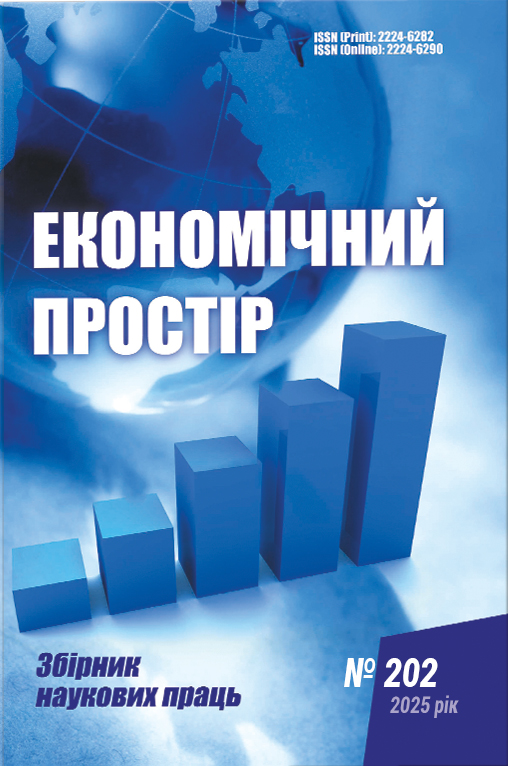Перейти до вмісту (натисніть Enter)
ТЕОРЕТИКО-МЕТОДОЛОГІЧНЕ ПІДҐРУНТЯ ФОРМУВАННЯ ФІНАНСОВОГО МЕХАНІЗМУ ДІЯЛЬНОСТІ НАТО
ЗАВАНТАЖИТИ СТАТТЮ

АНОТАЦІЯ
У статті розглядається теоретичне та методологічне підгрунтя фінансового механізму діяльності Північно-атлантичного Альянсу, яка є міжнародною організацією військового напряму, її основні напрями діяльності і мета створення на функціонування в історичному контексті. Розроблено проєкцію принципів «вічного миру» І. Канта на інституційний дизайн НАТО. Проаналізовано засади функціонування фінансових механізмів у багатонаціональних безпекових структурах, базуючись на концепції функціоналізму. Зосереджено увагу на механізмах міждержавної співпраці з позиції теорії неофункціоналізму (теорії регіональної інтеграції). Розглянуто фінансовий механізм НАТО крізь призму інституціонального підходу в умовах розширення. Досліджено вплив теоретичних підходів міжнародних відносин на формування фінансової архітектури НАТО. Запропоновано концептуальну модель формування фінансової архітектури НАТО.
КЛЮЧОВІ СЛОВА
міжнародні відносини, безпека, НАТО, фінансовий механізм, концепція функціоналізму, неофункціоналізм, військовий бюджет, фінансова архітектура.
ПОСИЛАННЯ
1. Кант І. (2022). Вічний мир.
2. Північноатлантичний договір (Вашингтон, 4 квітня 1949 р.). Верховна Рада України.
3. Mitrany, D.A (1943). Working Peace System: An Argument for the Functional Development of International Organization. London: Royal Institute of International Affairs.
4. Long, D., & Ashworth, L.M. (1999). Working for Peace: the Functional Approach, Functionalism and Beyond. International Political Economy Series. Palgrave Macmillan, London.
5. Neofunctionalism.
6. Binici, O. (2022). European Integration Theory in Times of Crises: Updating 'the Old Debate' with a Morphogenetic Approach. Europolity: Continuity and Change in European Governance. 16: 5.
7. Alec Stone Sweet & Wayne Sandholtz (1997). European integration and supranational governance. Journal of European Public Policy, No. 4(3). Pp. 297–317.
8. Treaty on European Union (Consolidated Version), Treaty of Maastricht. Official Journal of the European Communities, (7 February 1992).
9. Binici, Ö. (2020). Expanding European Integration towards the Western Balkans in Times of Crises: A Neo-Functionalist Examination. Central European Journal of International and Security Studies, No. 14(4). Pp. 75–98.
10. Keohane, R.O., & Martin, L.L. (1995). The Promise of Institutionalist Theory. International Security, No. 20(1). Pp. 39–51.
11. Keohane, R.O., & Nye, J.S. (2001). Power and Interdependence.
12. Keohane, R.O. (2002). Power and governance in a partially globalized world. Routledge.
13. Ruggie, John Gerard (1982). International Regimes, Transactions, and Change: Embedded Liberalism in the Postwar Economic Order. International Organization, Vol. 36. Iss. 2. Pp. 379–415.
14. Nye, J. (1990). Bound to lead: The changing nature of American power.
15. Nye, J. (2004). Soft Power.
16. Bruce Russet (1994). Grasping the Democratic Peace: Principles for a Post-Cold War World. monograph.
17. Russett, B., Oneal, J.G. (2000). Triangulating Peace: Democracy, Interdependence, and International Organizations. New York: W.W. Norton, Chapters 2–5.
18. Kenneth N. Waltz. (1964). The Stability of a Bipolar World. Daedalus, Vol. 93. No. 3. Pp. 881-909
19. Ostrom, E. (1990). Governance the Commons.
20. Olson, M. (1965). The Logic of Collective Action: Public Goods and the Theory of Groups, With a New Preface and Appendix. Cambridge, MA: Harvard University Press, 186 p.
21. NATO Financial Regulations and Rules of the Military Budget and NATO Security Investment Programme (NSIP)
22. North, D. C. (1990). Institutions, Institutional Change and Economic Performance. Cambridge Univ. Press.
23. Williamson, O.E. (1985). The Economic Institutions of Capitalism: Firms, Markets, Relational Contracting. University of Illinois at Urbana-Champaign's Academy for Entrepreneurial Leadership Historical Research Reference in Entrepreneurship,
24. Williamson, O. E. (1972). Transaction Cost Economics: The Governance of Contractual Relations. Journal of Law & Economics, No. 22. Pp. 233–261.
25. Katzenstein, P.J. (ed.). (1996). The Culture of National Security: Norms and Identity in World Politics. Columbia University Press.
26. Wendt, A. (1992). Anarchy Is What States Make of It: The Social Construction of Power Politics. International Organization, No. 46(2). Pp. 391–425.
27. Finnemore, M., & Sikkink, K. (1998). International Norm Dynamics and Political Change. International Organization, No. 52(4). Pp. 887–917

